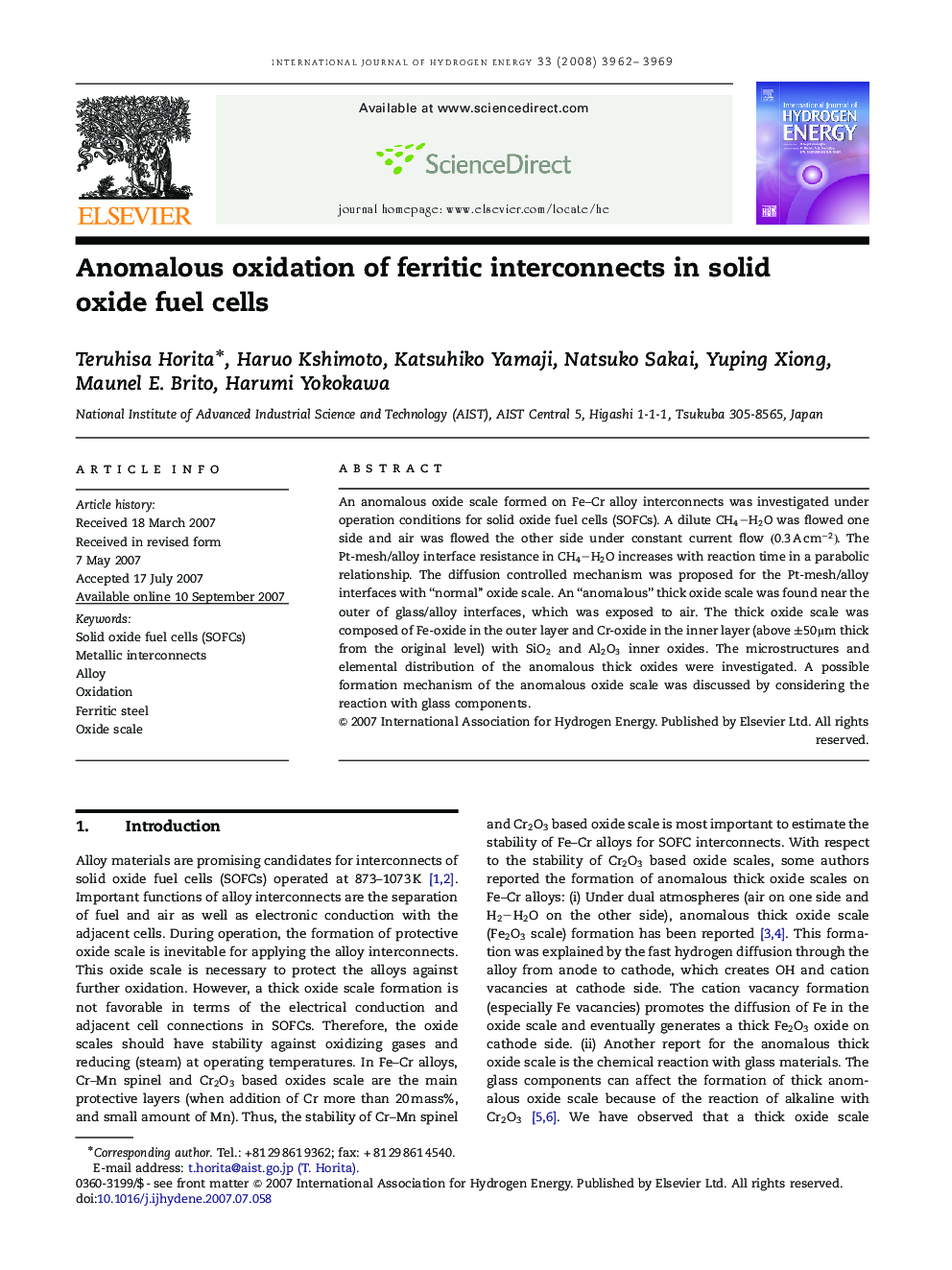| Article ID | Journal | Published Year | Pages | File Type |
|---|---|---|---|---|
| 1283688 | International Journal of Hydrogen Energy | 2008 | 8 Pages |
An anomalous oxide scale formed on Fe–Cr alloy interconnects was investigated under operation conditions for solid oxide fuel cells (SOFCs). A dilute CH4–H2OCH4–H2O was flowed one side and air was flowed the other side under constant current flow (0.3Acm-2). The Pt-mesh/alloy interface resistance in CH4–H2OCH4–H2O increases with reaction time in a parabolic relationship. The diffusion controlled mechanism was proposed for the Pt-mesh/alloy interfaces with “normal” oxide scale. An “anomalous” thick oxide scale was found near the outer of glass/alloy interfaces, which was exposed to air. The thick oxide scale was composed of Fe-oxide in the outer layer and Cr-oxide in the inner layer (above ±50μm thick from the original level) with SiO2SiO2 and Al2O3Al2O3 inner oxides. The microstructures and elemental distribution of the anomalous thick oxides were investigated. A possible formation mechanism of the anomalous oxide scale was discussed by considering the reaction with glass components.
